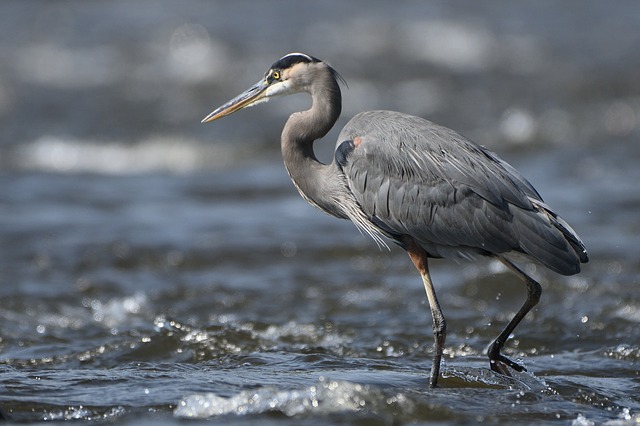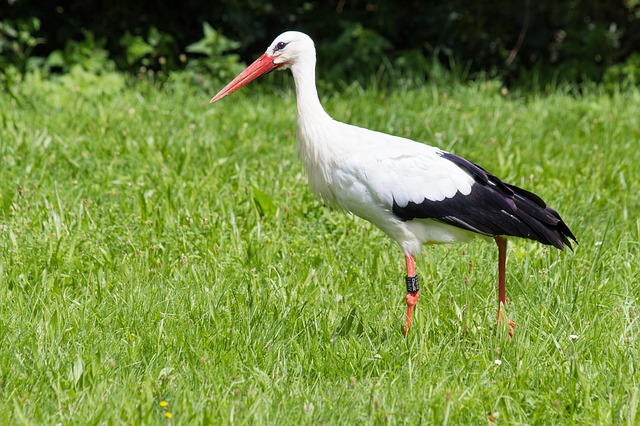
Swans are famously long-necked birds that are symbols of romance, love, beauty, and purity. Since these waterbirds have so many admirers, people often wonder about their eating habits, behaviors, and more. What do swans eat, anyway?
Swan Basics
Swans typically live in colder locations. Examples are North America, northern regions of Europe, and Asia. They reside on water in lakes, ponds, wetlands, bays, and estuaries. Swan species include tundra swans, mute swans, trumpeter swans, and black swans.
What Do Swans Eat in the Wild?
Swans generally are herbivorous. That’s why they consume plants above all else. Although they sometimes consume worms, frogs, fish, and tiny insects, they usually eat grass, fruits, and algae. Wild swan dietary staples include muskgrass, waterweed, pondweed, wild rice, and wild celery.
What Do Swans Eat in the Winter?
It can be difficult for swans to track down their dietary favorites in times of frigid temperatures. That’s why swans often seek out wintertime replacements including tubers and berries. Rye grass, floor brush, wheatgrass, lupine, grain crops, cranberries, and blueberries can all be part of the winter swan diet.
What Can You Give Swans to Eat?
Swans generally are able to find sustenance without the kindness of human beings. If you’re interested in helping these waterfowl, however, you can offer them foods that are normal and natural to them. These foods include corn, lettuce, grains, chopped carrots, lettuce, and leafy green vegetables such as spinach. Make sure to cut the leafy green veggies into little pieces.
How Do Swans Eat?
Swans tend to drink and eat food as they float on water. Since their necks are flexible and lengthy, they enable them to retrieve shoots while they swim. Swans lack teeth that enable them to crush their food pieces. They rely on gizzards. These muscular organs operate similarly to mammal molar teeth.
Gizzards turn food into a pulp and because of that simplify digestion. They do so by boosting food surface area. Swans consume grit that can grind their food items up well, too.
Do Swans Eat Fish?
As indicated previously, swans do sometimes eat fish. They typically eat fish without meaning to do so. Fish can cling on to the weeds they eat, after all. Immature swans or “cygnets” are no strangers to occasional fish intake, either. Swans in general tend to stick to consuming fish that are smaller.
Do Swans Eat Ducks?
Swans do not eat ducks. Some people say they have witnessed swan attacks on ducklings. These fights may be territorial rather than food-oriented, though. Swans that want ducklings to avoid their territories are thought to occasionally drown the young creatures.
While normally peaceful, they can be aggressive when they feel that their young or nesting ground is in danger. And because other birds know this and typically keep their distance, fake swans are used to deter other types of waterfowl such as geese and ducks from pools and ponds quite successfully.
Can Swans Eat Wild Bird Seed?
Giving wild bird seeds to swans in the water may not be the best idea. The majority of the grains and the seeds that make up wild bird seed will do no more than just sink to the ground in bodies of water. This may lead to all sorts of consequences as well. It may lead to the development of detrimental bacteria. It may even bring on riverbed blockages.
If you want to feed swans on terra firma, you can consider doing so using wild bird seed. You can sprinkle wild bird seeds over their surroundings. Wild bird seed isn’t only suitable for feeding swans. It can also be suitable for the feeding of geese, ducks, and wild birds overall.
Can Swans Eat Bread?
People often feed bread to birds. The truth is that swans are more than willing to consume this food item. Although bread feeding is preferable to allowing a swan to remain hungry, it’s not ideal at all. Bread is devoid of the vital nutrients that are crucial for optimal swan wellness. Make sure to steer clear of feeding significant amounts of bread to swans. Just say no to feeding swans bread that has mold on it, too.
Start Shopping for Swan Food!
Raccoon Pictures
Raccoons are easily recognizable by their black face mask and ringed tail. And there are many fascinating things about this intelligent nocturnal species. So we’ve compiled some of the best raccoon pictures to show you just how amazing and unique they are. Raccoon...
Eagle Pictures
Eagles are large powerful raptors with sharp talons and beaks. These apex predators are typically at top of the food chain and there are many interesting things about them. So we’ve compiled some of the best eagle pictures to show you just how amazing they are. Bald...
Nutria Pictures
Nutria are large semi-aquatic rodents from South America. In the United States where they were originally imported for the fur industry, they are an invasive species. Despite their pest status, there are many interesting things about them. So here are some of the best...
Stork Pictures
Storks are tall wading birds with long legs and necks. These amazing birds have many fascinating things about them. And we’ve compiled some of the top stork pictures to help show you just how interesting and beautiful they are. White Stork The white stork has a body...
Alligator Pictures
The American alligator is a large predatory reptile that inhabits the southeastern United States. It’s a fascinating animal with many interesting things about it. And we’ve collected some of the best alligator pictures to help show you just how amazing they are....
How Long Do Great Blue Herons Live?
The life expectancy of birds is known to be closely related to their size. So as the biggest heron species in North America, how long do great blue herons live? The average life expectancy for these large birds is around fifteen years. However, surviving their first...
Where Do Great Blue Herons Live?
The great blue heron is considered to be the most widespread heron in North America. So exactly where do great blue herons live? Here’s what you’ll want to know. Great Blue Heron Range The great blue heron is found throughout most of the North American continent. In...
Where Do Great Blue Herons Nest?
While many of us have seen great blue herons their nesting habits often remain a mystery to most people. That’s because they purposely nest in hard-to-reach places. So where do great blue herons nest? Here’s the answer. A Colony Nester Typically great blue herons nest...
Do Great Blue Herons Migrate?
Do great blue herons migrate? This is something many people wonder about, especially if they’ve seen a heron during the cold winter months. And the answer is both yes and no. Here’s what you’ll want to know. Great Blue Heron Range The great blue heron has a large...
Great Blue Heron Pictures
Few species of birds are as tall, elegant, and attractive as the great blue heron. So we’ve compiled some of the best great blue heron pictures for you to admire and help you to learn more about this amazing bird! Great Blue Heron Head The head of the great blue heron...
What Do Snapping Turtles Eat?
Many people are familiar with the fact that snapping turtles have an incredibly strong bite. They use their strong jaws and sharp beak not just for defense but also for catching food. So what do snapping turtles eat? Here's what you'll want to know. Snapping turtles...
Birds That Look Like Egrets
Egrets are predatory birds that hunt and live in a range of both freshwater and saltwater habitats. These birds are usually white, and have S-shaped necks, long legs, and dagger-like beaks. However, they are often mistaken for several other types of birds that look...
Birds That Look Like Storks
Storks are large wading birds with robust bills and long legs. These tall carnivorous birds are well-known for their wide wingspans and also for building huge nests. However, they are often confused with several other bird types that have a similar appearance. So...
Birds That Look Like Herons
Herons are tall birds with long slender legs and necks. And they often wade in the water when hunting for food. Yet there are several other types of birds that may be mistaken for them. To make things more confusing many of these birds also spend time in the water and...
Great Blue Heron Facts
The great blue heron is named for its size and the grey-blue color on its wings, stomach, and back. This species has many fascinating things about it. So here are the top great blue heron facts. It's The Largest North American Heron The great blue heron is a big bird...
Are There White Herons?
Are there white herons? This is something many people wonder especially after seeing a tall all-white bird. The answer is yes! And here’s a fast introduction to them. A White Color Morph Most people are familiar with the great blue heron, a large predatory and...
Great White Heron Facts
While many people are familiar with the great blue heron, they are often surprised to find out that there’s also a great white heron. There are many things you’ll want to know about this stunning bird. So here are the top great white heron facts. The Great White Heron...
What Animals Eat Herons?
Because of their size and long sharp beaks, it can be hard to imagine that herons have any natural predators. While they do, they definitely don’t have nearly as many predators as most other types of birds. So what animals eat herons? Predators Of Adult Herons For...
What Do Herons Eat?
Great blue herons are often seen slowly wading in shallow water hunting for food. You may have even spotted one of these large birds in your own backyard pond. This leaves many people wondering: “What do great blue herons eat?” And here’s everything you’ll need to...
What Do Green Herons Eat?
The green heron is a secretive and small heron species. What it lacks in size however it makes up for in intelligence. It is particularly well-known for how it uses its smarts when hunting for food. So what do green herons eat? Read on to find out. Meet The Green...





















